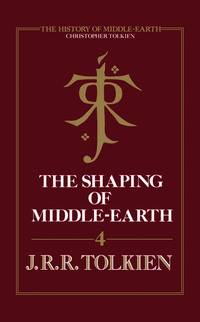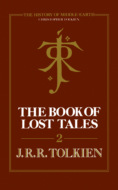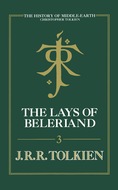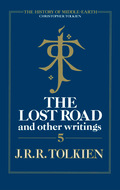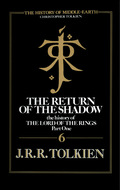Raamatut ei saa failina alla laadida, kuid seda saab lugeda meie rakenduses või veebis.
Loe raamatut: «The Shaping of Middle-earth»

J. R. R. TOLKIEN
The Shaping of Middle-earth
THE QUENTA, THE AMBARKANTA AND THE ANNALS
together with the earliest ‘Silmarillion’ and the first Map
Christopher Tolkien

COPYRIGHT
HarperCollinsPublishers
1 London Bridge Street
London SE1 9GF
First published in Great Britain by HarperCollinsPublishers 1986
Copyright © The Tolkien Estate Limited and C.R. Tolkien 1986
 ® and ‘Tolkien’® are registered trade marks of The Tolkien Estate Limited
® and ‘Tolkien’® are registered trade marks of The Tolkien Estate Limited
All rights reserved under International and Pan-American Copyright Conventions. By payment of the required fees, you have been granted the non-exclusive, non-transferable right to access and read the text of this e-book on screen. No part of this text may be reproduced, transmitted, down-loaded, decompiled, reverse engineered, or stored in or introduced into any information storage and retrieval system, in any form or by any means, whether electronic or mechanical, now known or hereinafter invented, without the express written permission of HarperCollins.
Source ISBN: 9780261102187
Ebook Edition © DECEMBER 2018 ISBN: 9780007348213
Version: 2019-10-21
Find out more about HarperCollins and the environment at www.harpercollins.co.uk/green
HarperCollinsPublishers has made every reasonable effort to ensure that any picture content and written content in this ebook has been included or removed in accordance with the contractual and technological constraints in operation at the time of publication.
CONTENTS
Cover
Title Page
Copyright
A Note to the Reader
Preface
I PROSE FRAGMENTS FOLLOWING THE LOST TALES
II THE EARLIEST ‘SILMARILLION’
Commentary
III THE QUENTA
Commentary
Appendix 1: Ælfwine’s translation of the Quenta into Old English; Old English equivalents of Elvish names
Appendix 2: The Horns of Ylmir
IV THE FIRST ‘SILMARILLION’ MAP
V THE AMBARKANTA
Commentary
VI THE EARLIEST ANNALS OF VALINOR
Commentary
Appendix: Ælfwine’s translations of the Annals of Valinor into Old English
VII THE EARLIEST ANNALS OF BELERIAND
Commentary
Second version of the earliest Annals
Commentary
Appendix: Ælfwine’s translation of the Annals of Beleriand into Old English
Searchable Terms
Other Books by J.R.R. Tolkien
About the Publisher
A NOTE TO THE READER
The page numbers in this text relate to the printed version of the book; they do not match the pages of your ebook. Due to the high number of references to specific lines of text in the translation, these line numbers, together with their accompanying lines of text, have been fixed in position so that the correct words remain anchored to the correct line number; the text of the translation will therefore not reflow in the same way as the rest of the ebook. After a hyperlink has been activated we recommend using your device’s “Back” button to return to the original location. Where no hyperlink is present you can use your ebook reader’s search tool to find a specific word or passage.
All of the special characters below appear in this ebook. If your e-reader is not displaying these characters you may find this affects your reading enjoyment of the ebook.
| Text | Character |
 | ë |
 | û |
 | Æ |
 | î |
 | ð |
PREFACE
This book brings the ‘History of Middle-earth’ to some time in the 1930s: the cosmographical work Ambarkanta and the earliest Annals of Valinor and Annals of Beleriand, while later than the Quenta Noldorinwa – the ‘Silmarillion’ version that was written, as I believe, in 1930 – cannot themselves be more precisely dated.
This is the stage at which my father had arrived when The Hobbit was written. Comparison of the Quenta with the published Silmarillion will show that the essential character of the work was now fully in being; in the shape and fall of sentences, even of whole passages, the one is constantly echoed in the other; and yet the published Silmarillion is between three and four times as long.
After the hasty ‘Sketch of the Mythology’ (chapter II in this book), the Quenta Noldorinwa was in fact the only complete version of ‘The Silmarillion’ that my father ever made. Towards the end of 1937 he interrupted work on a new version, Quenta Silmarillion, which extended to part way through the story of Túrin Turambar, and began The Lord of the Rings (see The Lays of Beleriand pp. 364–7). When after many years he returned to the First Age, the vast extension of the world that had now come into being meant that the Quenta Silmarillion, which had been stopped in full flight, could not be taken up from where it fell; and though he undertook exceedingly complex revisions and enlargements of the earlier parts during the following years, he never achieved again a complete and coherent structure. Especially in its concluding chapters the Quenta Noldorinwa is thus one of the primary elements in the study of the work as a whole.
In the Annals of Valinor and the Annals of Beleriand are seen the beginnings of the chronological structure which was to become a central preoccupation. The Annals would develop into a separate ‘tradition’, parallel to and overlapping but distinct from ‘The Silmarillion’ proper, and (after intervening versions) emerging in the years following the completion of The Lord of the Rings in two chief works of the Matter of Middle-earth, the Annals of Aman and the Grey Annals of Beleriand (see pp. 262, 294). With the Quenta and with these earliest versions of the Annals I give the brief texts in Anglo-Saxon feigned to have been made by Ælfwine (Eriol) from the works that he studied in Tol Eressëa, the Lonely Isle.
The commentaries are largely concerned to relate geography, names, events, relationships and motives to what preceded and what followed; inevitably this entails a great deal of reference back to the previous books, and the text of the commentaries is hardly enticing (though being in smaller print they can be readily distinguished from the original works). My object is to try to show, and not merely impressionistically, how Middle-earth and its history was built up gradually and delicately, and how a long series of small shifts or combinations would often lead to the emergence of new and unforeseen structures – as for example in the story of Gwindor of Nargothrond (p. 180).
The arrangement of the texts of the ‘Sketch of the Mythology’ and the Quenta, split into numbered sections comparable from one text to the other, is explained on p. 11. The earlier volumes in the series are referred to as I (The Book of Lost Tales Part I), II (The Book of Lost Tales Part II), and III (The Lays of Beleriand).
The maps and diagrams in the book are reproduced with the permission of the Bodleian Library, Oxford, and I thank the staff of the Department of Western Manuscripts at the Bodleian for their assistance.
The fifth volume will contain my father’s unfinished ‘time-travel’ story, The Lost Road, together with the earliest forms of the legend of Númenor, which were closely related to it; the Lhammas or Account of Tongues; the Etymologies; and all the writings concerned with the First Age up to the time when The Lord of the Rings was begun.
I
PROSE FRAGMENTS FOLLOWING THE LOST TALES
Before giving the ‘Sketch of the Mythology’, the earliest form of the prose ‘Silmarillion’, there are some brief prose texts that can be conveniently collected here.
(i)
Among loose papers there is an early piece, soon abandoned, entitled Turlin and the Exiles of Gondolin. It will be seen that it relates closely to the beginning of the tale of The Fall of Gondolin (II. 149) but at the same time contains much that is new. That it was the beginning of a later version of the tale is clear at once from the name Mithrim, for this only replaced Asgon by emendation in the final text of The Fall of Gondolin (II. 202). This brief text reads as follows. At the first three occurrences of the name Turlin in the narrative (but not in the title) it was emended to Turgon; at the fourth and fifth Turgon was so written from the first. I give Turgon throughout.
‘Then’ said Ilfiniol son of Bronweg ‘know that Ulmo Lord of Waters forgot never the sorrows of the Elfin kindreds beneath the power of Melko, but he might do little because of the anger of the other Gods who shut their hearts against the race of the Gnomes, and dwelt behind the veiled hills of Valinor heedless of the Outer World, so deep was their ruth and regret for the death of the Two Trees. Nor did any save Ulmo only dread the power of Melko that wrought ruin and sorrow over all the Earth; but Ulmo desired that Valinor should gather all its might to quench his evil ere it be too late, and him seemed that both purposes might perchance be achieved if messengers from the Gnomes should win to Valinor and plead for pardon and for pity upon the Earth; for the love of Palúrien and Oromë her son for those wide realms did but slumber still. Yet hard and evil was the road from the Outer Earth to Valinor, and the Gods themselves had meshed the ways with magic and veiled the encircling hills. Thus did Ulmo seek unceasingly to stir the Gnomes to send messengers unto Valinor, but Melko was cunning and very deep in wisdom, and unsleeping was his wariness in all things that touched the Elfin kindreds, and their messengers overcame not the perils and temptations of that longest and most evil of all roads, and many that dared to set forth were lost for ever.
Now tells the tale how Ulmo despaired that any of the Elfin race should surpass the dangers of the way, and of the deepest and the latest design that he then fashioned, and of those things which came of it.
In those days the greater part of the kindreds of Men dwelt after the Battle of Unnumbered Tears in that land of the North that has many names, but which the Elves of Kôr have named Hisilómë which is the Twilit Mist, and the Gnomes, who of the Elf-kin know it best, Dor-Lómin the Land of Shadows. A people mighty in numbers were there, dwelling about the wide pale waters of Mithrim the great lake that lies in those regions, and other folk named them Tunglin or folk of the Harp, for their joy was in the wild music and minstrelsy of the fells and woodlands, but they knew not and sang not of the sea. Now this folk came into those places after the dread battle, being too late summoned thither from afar, and they bore no stain of treachery against the Elfin kin; but indeed many among them clung to such friendship with the hidden Gnomes of the mountains and Dark Elves as might be still for the sorrow and mistrust born of those ruinous deeds in the Vale of Niniach. Turgon was a man of that folk, son of Peleg, son of Indor, son of [Ear >] Fengel who was their chief and hearing the summons had marched out of the deeps of the East with all his folk. But Turgon dwelt not much with his kindred, and loved rather solitude and the friendship of the Elves whose tongues he knew, and he wandered alone about the long shores of Mithrim, now hunting in its woods, now making sudden music in the rocks upon his rugged harp of wood strung with the sinews of bears. But he sang not for the ears of Men, and many hearing the power of his rough songs came from afar to hearken to his harping; [?but] Turgon left his singing and departed to lonely places in the mountains.
Many strange things he learned there, broken tidings of far off things, and longing came upon him for deeper lore, but as yet his heart turned not from the long shores, and the pale waters of Mithrim in the mists. Yet was he not fated to dwell for ever in those places, for ’tis said that magic and destiny led him on a day to a cavernous opening in the rocks down which a hidden river flowed from Mithrim. And Turgon entered that cavern seeking to learn its secret, but having entered the waters of Mithrim drave him forward into the heart of the rock and he might not win back into the light. This men have said was not without the will of Ulmo, at whose prompting may be the Gnomes had fashioned that deep and hidden way. Then came the Gnomes to Turgon and guided him along the dark passages amid the mountains until he came out once more into the light.
The text ends here (though manuscript pages written at the same time continue on another subject, see (ii) below).
Turlin must have been a passing shift from Tuor (cf. the form Tûr that appears in texts of The Fall of Gondolin, II. 148), and Turgon likewise; in the Tale Turgon is of course the name of the King of Gondolin. This curious passing transference of a primary name in the legends may be compared with the brief substitution of Celegorm for Thingol and Maglor for Beren in the Lay of Leithian (III. 159).
Particularly interesting is the account here of the origins of Tuor’s people: they came out of the East to the Battle of Unnumbered Tears, but they came too late. This can hardly be wholly unconnected with the coming of the Easterlings before the battle in the later story. The genealogy of Tuor (Turlin, Turgon) is here ‘son of Peleg son of Indor son of Fengel’. In The Fall of Gondolin he is ‘son of Peleg son of Indor’ (II. 160); in the fragment of the Lay of the Fall of Gondolin he is the son of Fengel, and in associated notes Tuor is himself called Fengel (III. 145). His people are here the Tunglin, the folk of the Harp, whereas in The Fall of Gondolin (ibid.) he belongs to ‘the house of the Swan of the sons of the Men of the North’.
Also noteworthy is the opening of the present text where Ulmo’s desires and devisings are described: his unceasing attempts to persuade the Gnomes to send messengers to Valinor, his isolation from the other Valar, his wish that the power of Valinor should go against Melko in time. There does not appear to be any other mention of Ulmo’s attempting to arouse the Gnomes to send messages to Valinor; and though his isolation in his pity for the Gnomes in the Great Lands appears strongly at the beginning of the tale of The Hiding of Valinor (I. 209), there Manwë and Varda beside Ulmo were opposed to the withdrawal of Valinor from the fate of ‘the world’.
Lastly, ‘the Vale of Niniach’ must be the site of the Battle of Unnumbered Tears; cf. ‘the Vale (Valley) of Weeping Waters’ in the outlines for Gilfanon’s Tale (I. 239–40). Niniach never occurs again in this application, though the way by which Tuor went down to the sea came to be called Cirith Ninniach, the Rainbow Cleft.
(ii)
The manuscript Turlin and the Exiles of Gondolin continues (the paper and the handwriting are identical, and all were placed together) with a further text of great interest, since it represents the first step towards the later story of the coming of the Noldor to Middle-earth since the outlines for Gilfanon’s Tale (I. 237ff.). This was hastily pencilled and is in places difficult to make out.
Then Gelmir king of the Gnomes marshalled his unhappy folk and he said to them: ‘We are come at last to the Great Lands and have set our feet upon the Earth, and not even Elf-wisdom may yet say what shall come of it; but the torment and the pain and the tears that we have borne in the way hither shall be sung in song and told in tale by all the folk of the Elfin race hereafter; yea and even among other children of Ior shall some remember it.’
Long time did the Gnome-folk dwell nigh those westward shores in the northern regions of the Earth; and their anguish was lessened. Some were there that fared far afield and gained knowledge of the lands about, and they sought ever to know whither Melko had fled, or where was hidden the gems and treasury of Valinor. [Struck out: Then did Gelmir marshal his hosts and three great armies had he, and Golfin his son was captain of the one, and Delin his son of a second, [Oleg >] Lúthien his son of the third, but Gelmir was lord and king.] Thereafter did all the folk move onward to the East and somewhat South, and all the armies of Golfin and of Delin moved ahead unhampered. Now the ice melted, and the snow [?thinned], and the trees grew deep upon the hills, and their hearts knew comfort, till their harps and elfin pipes awoke once more. Then did the rocks ring with the sweet music of the Elves, and countless [?coming] of their many feet; new flowers sprang behind those armies as they trod, for the earth was glad of the coming of the Gnomes, nor had the sun or the white moon yet seen fairer things in those places than their moving field of glinting spears and their goldwrought elfin armoury. But the women and the Gnome-maids and Gnome-children sang as they journeyed after, and no such clear song of hope have the lands heard since, yet was it sad and boding beside that singing that was heard upon [Kôr >] the hill of Tûn while the Two Trees blossomed still.
Of all those scouts and scattered hosts that went far ahead or upon either side of the marching Gnomes none were more eager or burnt with greater fire than Fëanor the gem-smith and his seven sons; but nothing did they discover yet, and came the Gnomes at length unto that magic northern land of which tales often speak, and by reason of its dark woods and grey mountains and its deep mists the Gnomes named Dor Lómin land of shadows. There lies a lake, Mithrim whose mighty waters reflect a pale image of the encircling hills. Here did the Gnomes rest once more a great while, and Gelmir let build dwellings for the folk about the shores and shoreland woods, but there too he numbered and marshalled all his hosts both of spearmen, and bowmen, and of swordsmen, for no lack of arms did the Gnomes bring out of Valinor and the armouries of Makar to their war with Melko. And three great armies had Gelmir under his lordship, and Golfin his son was captain of one, and Delin his son of another, and Lúthien (not that Lúthien of the Roses who is of another and a later tale) of a third; and Golfin’s might was in swordsmen, and Delin had more of those who bore the long.… elfin spears, but Lúthien’s joy was in the number and …. of his bowmen – and the bow has ever been the weapon wherein the Elf-kin has had the most wondrous skill. Now the colours of the Gnomes were gold and white in those ancient days in memory of the Two Trees, but Gelmir’s standard bore upon a silver field a crown of gold, and each captain had a fair banner; and the sign of Golfin in those days was upon gold a silver sword, and of Delin a green beech leaf upon silver diapered with golden flowers, and of Lúthien a golden swallow that winged through an azure field as it were the sky set with silver stars, and the sons of Fëanor wrought that standard and those banners, and they shone by sunlight and by mist and by moonlight and by starless dark by the light of the Gnome-wrought gems that sewed them [sic].
Now it happened on a while that Fëanor got him beyond to the hills that girt Dor Lómin in those parts [northward of >] beyond Artanor where there were open empty lands and treeless hills, and he had no small company and three of his sons were with him. Thus came they on a day nigh evening to a hilltop, and afar off descried a red light leaping in a vale open on that side that looked toward [?them]. Then Fëanor wondered what this fire might be, and he and his folk marched in the still night swiftly thereto, so that ere dawn they looked down into that vale. There saw they an armed company no less than their own, and they sat around a mighty fire of wood. The most were asleep, but some few stirred, and Fëanor stood then up and called in his clear voice so that the dark vale rang: ‘Who be ye; men of the Gnomes or other what – say swiftly for ’tis best for [you to] know the children of Fëanor compass you around.’
Then a great clamour broke forth in the vale and the folk of Fëanor knew full soon that here were no elfin folk, by reason of their harsh voices and unlovely cries, and many arrows came winging in the dark towards that voice, but Fëanor was no longer there. Swiftly had he gone and drawn the most of his folk before the vale’s mouth whence a stream issued forth tree-hung
Here the text ends abruptly and near the top of a new page; it is clear that no more was written.
The Noldorin house has still not emerged, but we have a king Gelmir of the Gnomes, with his sons Golfin, Delin, Lúthien (the last emended from Oleg), captains of his three armies. There is no suggestion that Fëanor and his sons were associated with these in any sort of close kinship. In the fragment of the Lay of the Fall of Gondolin (see III. 146–7) there appears – for the first time – Fingolfin, who steps into Finwë Nólemë’s place as the father of Turgon and Isfin, but is not the son of Finwë, rather of Gelmir. I have suggested there that this Gelmir, father of Golfin/Fingolfin, is to be identified with Finwë, father of Fingolfin in the alliterative poems and later; and it may be that the name Gelmir is formally connected with Fin-golma, which in the outlines for Gilfanon’s Tale is another name for Finwë Nólemë (I. 238–9, and see I. 263, entry Nólemë). It is to be remembered that Finwë Nóleme was not in the earliest legend the father of Fëanor and was not slain by Melko in Valinor, but came to the Great Lands. – Of the other sons of Gelmir named in the present text, Delin and Lúthien, there is no trace elsewhere.
It is certainly clear that Golfin here is the first appearance of Fingolfin, and by the same token that this text preceded the abandoned beginning of the Lay of the Fall of Gondolin. On the other hand, the obscure story of the death of Fëanor in the earliest outlines (I. 238–9) has disappeared, and though the present text breaks off too soon for certainty it seems extremely probable that, had my father continued it a little further, we should have learned of Fëanor’s death in battle with the Orcs whom he and his companions had aroused in the valley where they were encamped. It may be, too, that we should have had an explanation of the puzzling lines of the Lay (III. 146):
’Twas the bent blades of the Glamhoth that drank Fingolfin’s life as he stood alone by Fëanor.
We are in any case here still a long way from the story of the divided hosts and the treachery of Fëanor.
The encampment of Mithrim (Asgon) is referred to already in the early outlines, but in the later of these there is mention (I. 239) of the first devising of weapons by the Gnomes at this time, whereas in the present text they are said to have brought great store of arms ‘out of Valinor and the armouries of Makar’. Here also appears the earliest form of the idea of the flowers springing beneath the marching feet of the Gnomish host.
A characteristic heraldry appears in the armies led by Gelmir’s sons, all in gold and silver, in memory of the Two Trees – the banners made (curiously enough) by the sons of Fëanor. In the ‘Sketch of the Mythology’ the banners of Fingolfin were in blue and silver, as they remained (p. 22).
The name Ior, which occurs at the beginning of the text in the expression ‘among other children of Ior’ (as opposed to ‘the Elfin race’) and seems therefore to refer to Ilúvatar, occurs elsewhere only in a quite different reference: it is given in the early Gnomish dictionary as the equivalent of Qenya Ivárë, ‘the famous “piper of the sea’”.
(iii)
Thirdly and lastly, an isolated slip of paper contains a most curious trace of a stage in development between The Flight of the Noldoli in the Lost Tales and the ‘Sketch of the Mythology’.
The Trees stand dark. The Plain is full of trouble. The Gnomes gather by torchlight in Tûn or Côr; Fëanor laments Bruithwir (Felegron) [emended to (Feleor)] his father, bids Gnomes depart & seek Melko and their treasures – he longs for the Silmarils – Finweg & Fingolfin speak against him. The Gnomes shout and prepare to depart. The Solosimpi refuse: the wise words of Ethlon (Dimlint). Foamriders [?beaches]. The threats of Fëanor to march to Cú nan Eilch. The arch, the lamplit quays; they seize the boats. One Gilfanon sees his mighty swanwinged swan-feather boat with red oars [?going] & he & his sons run to the arch and threaten the Gnomes. The fight on the arch & Gilfanon’s [?curse] ere they throw him into the waves. The Gnomes reach Fangros & repent – burn the boats.
Here Bruithwir (with the additional name Felegron > Feleor) is still the father of Fëanor as in the Lost Tales; but Fingolfin and Finweg have emerged, and speak against Fëanor (it is not clear whether Finweg here is Fingolfin’s father (Finwë) or Fingolfin’s son (later Fingon): see III. 137–8, 146). Narrative features that were never taken up in the later development of ‘The Silmarillion’ here make their only appearance. What lay behind ‘the wise words of Ethlon (Dimlint)’ and ‘the threats of Fëanor to march to Cú nan Eilch’ has now vanished without trace. The name Fangros appears once elsewhere, in the alliterative Children of Húrin, III. 31 line 631 (earlier Fangair), where there is a reference to a song, or songs, being sung
of the fight at Fangros, and Fëanor’s sons’
oath unbreakable
(the fight and the oath need not be in any way connected). But whatever happened at Fangros is lost beyond recall; and nowhere later is there any suggestion that the burning of the ships arose from repentance. In the Lost Tales (I. 168) the Gnomes ‘abandoned their stolen ships’ when they made the passage of the Ice; Sorontur reported to Manwë (I. 177) that he had seen ‘a fleet of white ships that drifted empty in the gales, and some were burning with bright fires’; and Manwë ‘knew thereby that the Noldoli were gone for ever and their ships burned or abandoned’.
Lastly, Gilfanon appears as an Elf of Alqualondë, one of those hurled by the Gnomes into the sea, though it is not said that he was drowned. Gilfanon of Tavrobel was a Gnome (I. 174–5); and it seems virtually certain that the two Gilfanons were not the same. In that case it is most probable that the Elf of Tavrobel had ceased to be so named; though he had not, as I think, ceased to exist (see p. 274).
